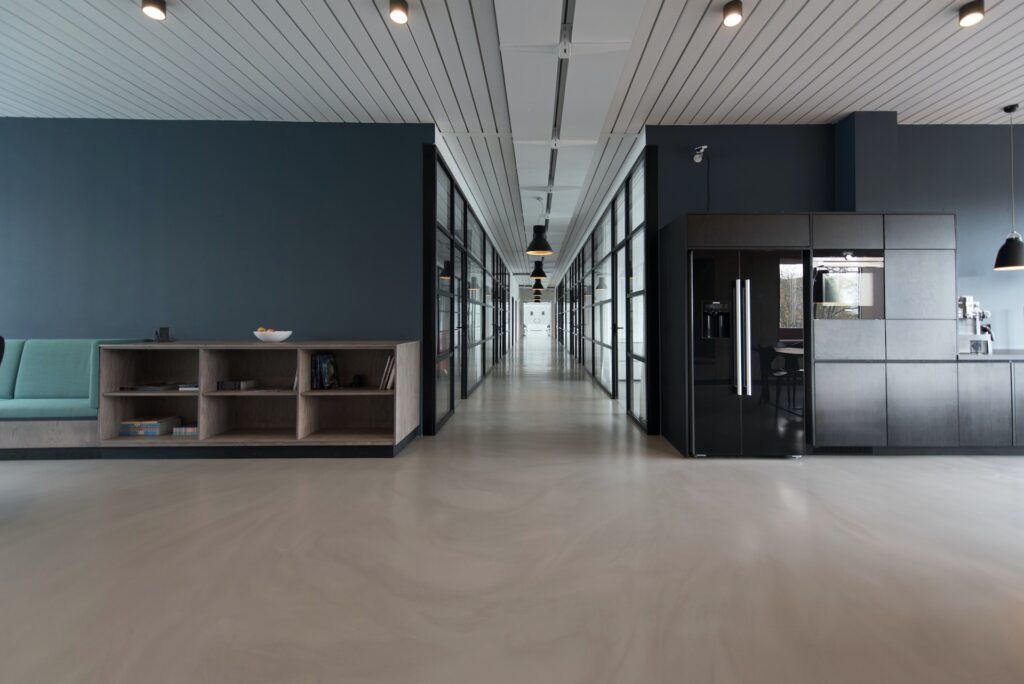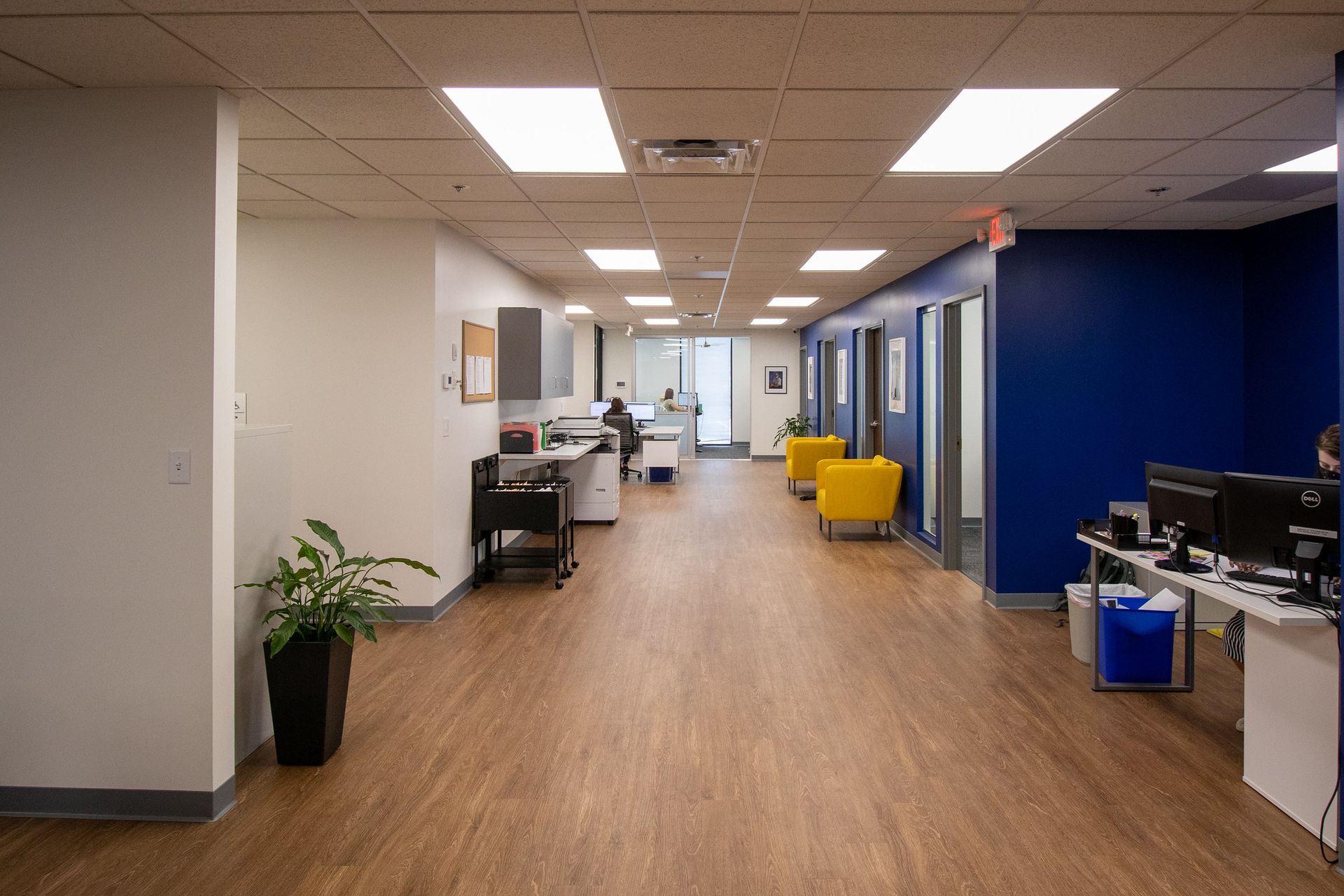Have you ever walked into a building, and something about the interior just felt off? Perhaps the lighting overtook the space, the space felt cramped and tiny even though there was plenty of room, or the designs on the walls didn’t suit the space.
In any of these cases (and many more), the paint colors might be one of the primary causes. When you pick the right paint colors for your space, customers and guests will enjoy the time they spend at your business – however, if you choose poorly, your organization may leave a negative impression on visitors.
Let’s look at the considerations when selecting a color pallet for your project.
Understand the Purpose of the Space
The first step in selecting the right paint color for your commercial space is understanding its primary purpose. Different areas serve different functions, and the paint color should support that function. For example:
- Restaurants may benefit from warm, inviting colors like deep reds or earthy tones that create a cozy dining atmosphere.
- Offices often require neutral or cool colors like blues and grays to promote productivity and concentration.
- Stores can use bold, attention-grabbing colors to attract shoppers and stimulate buying decisions.
- Churches might opt for serene, calming colors that promote a sense of peace and reflection.
- Schools may benefit from bright, engaging colors to create a stimulating learning environment.
By considering the purpose of the space, you can narrow down your color options and make choices that enhance its functionality.
Consider Brand Identity
For commercial businesses, the paint color should align with the brand identity. Your brand colors are an integral part of your company’s image, and incorporating them into your physical space helps create a cohesive and memorable experience for customers and employees. If your brand uses specific colors in its logo and marketing materials, consider incorporating them into your interior design to reinforce a recognizable and consistent brand.

Lighting Assessment
One often overlooked aspect of paint color selection is lighting. The type and amount of lighting in a space can significantly affect how colors appear. Natural daylight, fluorescent lighting, or warm incandescent bulbs can all influence the perceived tint.
Before finalizing your paint color choice, assess the lighting conditions in the space. Test paint samples under different lighting to see how they look in various scenarios, ensuring the chosen color works well under that specific lighting condition.
Sample Testing
Never underestimate the power of paint samples. Paint colors can look vastly different on a small swatch compared to an entire wall. To avoid surprises and disappointments, always test paint samples on the actual wall before making a final decision. This allows you to see how the color interacts with the surrounding elements and changes in lighting conditions. Sample testing is crucial in visualizing the final result and ensuring it meets your expectations.
Consider the Color Wheel
Understanding the color wheel and its principles can be valuable in choosing harmonious color palettes. Two fundamental concepts are complementary and analogous colors:
- Complementary colors are opposite on the color wheel, such as blue and orange or red and green. Complementary colors can create a sense of balance and contrast in your space.
- Analogous colors, such as blue, green, and teal, are next to each other on the color wheel. These colors create a harmonious and soothing visual effect when used together.
Applying these principles allows you to create a pleasing color scheme that enhances your space’s overall design.
Mind the Mood
Colors have the power to evoke specific emotions and moods. Understanding the psychological effects of color can help you choose the right one for your commercial space:
- Warm colors like reds, yellows, oranges can create a lively and energetic atmosphere.
- Cool colors like blues, greens, and purples promote relaxation and calmness.
- Neutral colors like grays, whites, and beiges provide a versatile and timeless backdrop for various design elements.
Consider the mood you want to convey in your space and select colors accordingly to create the desired ambiance.
Durability and Maintenance
In high-traffic commercial spaces, aesthetics are only part of the equation. Practicality matters, too. Choose paint colors that are visually appealing, durable, and easy to maintain. Look for paints with washability, stain resistance, and the ability to withstand frequent cleaning to ensure that your space will continue to look fresh and vibrant for years to come, even after wear and tear.
Consult with Professionals
When in doubt, seek professional guidance. Interior designers and color consultants are experts in their field and can provide valuable insights into color selection. They can help you navigate the complexities of color theory, lighting, and design trends. Working with professionals ensures that you make informed decisions and achieve the desired results for your commercial space.

Work With SmithPro Commercial Painting
Choosing the right paint color for your commercial property is a significant decision that requires careful consideration. Remember that the color you select profoundly impacts your space’s atmosphere and functionality, so invest the time and effort needed to make the right choice. Your well-chosen paint color will not only enhance the aesthetics of your commercial property but also contribute to a positive and memorable experience for everyone who enters.
Our SmithPro Painting team is here to help with design ideas and bring our expertise to your project. We have been serving commercial property owners in Greater St. Louis for decades – we can paint office buildings, schools, churches, retail stores, restaurants, you name it! Our competitive pricing and high-quality craftsmanship set us apart and sustain our commitment to excellence. Contact us today!











